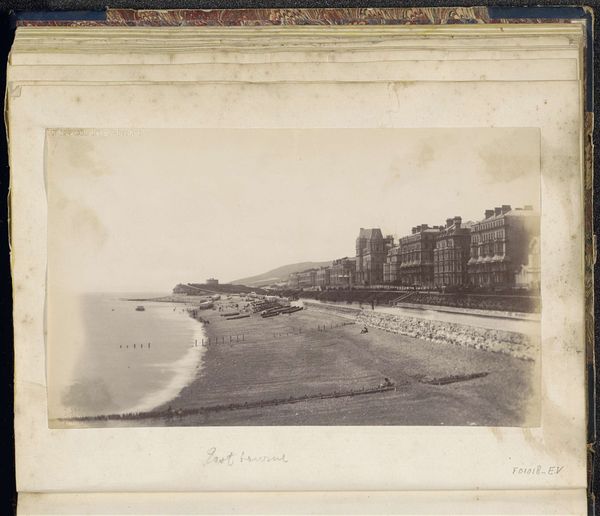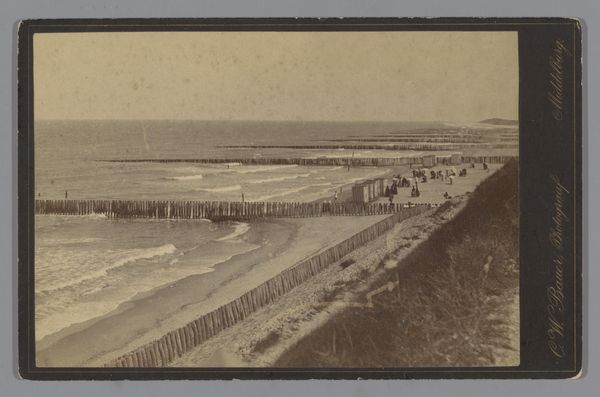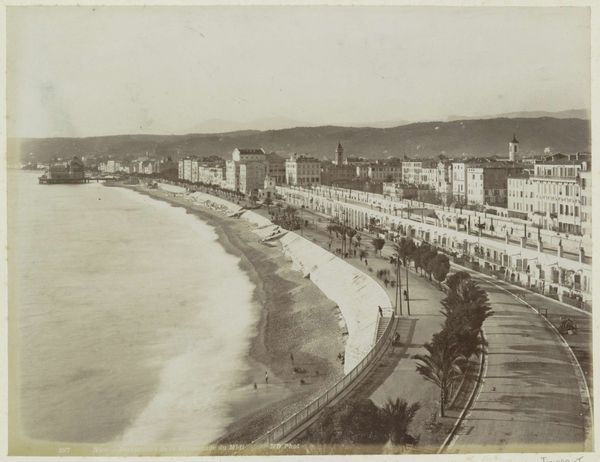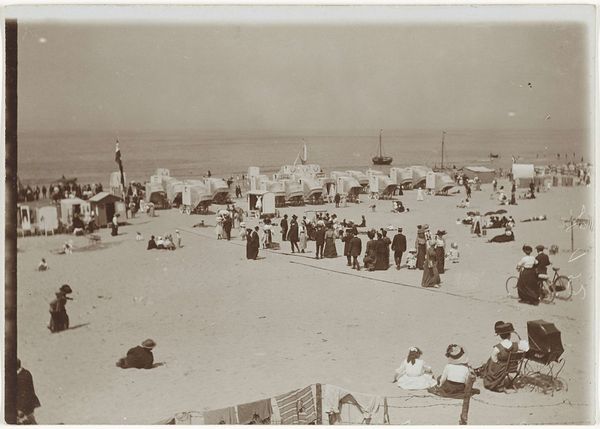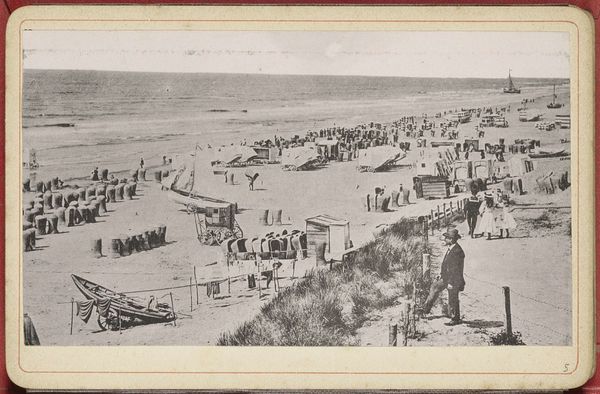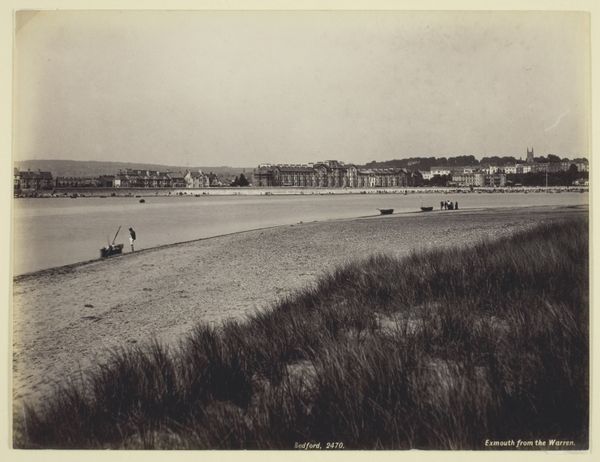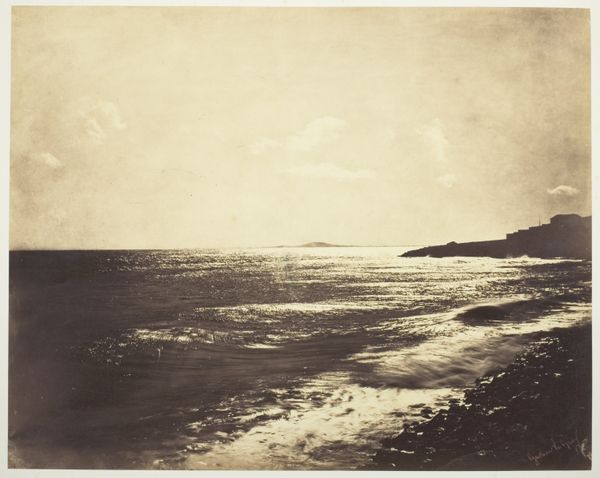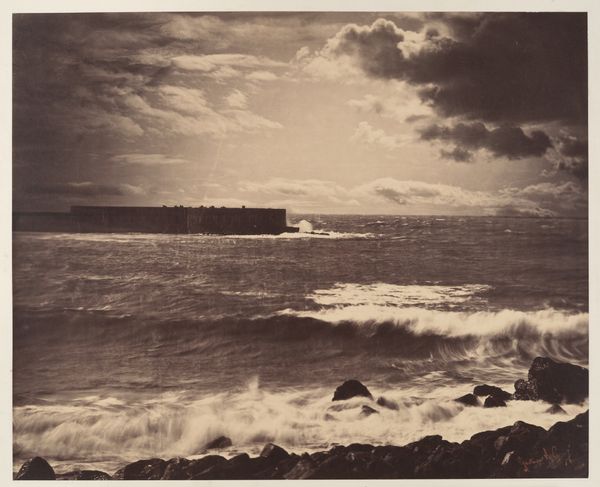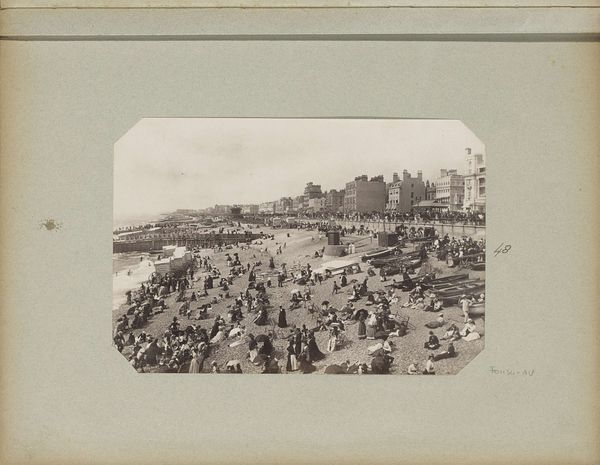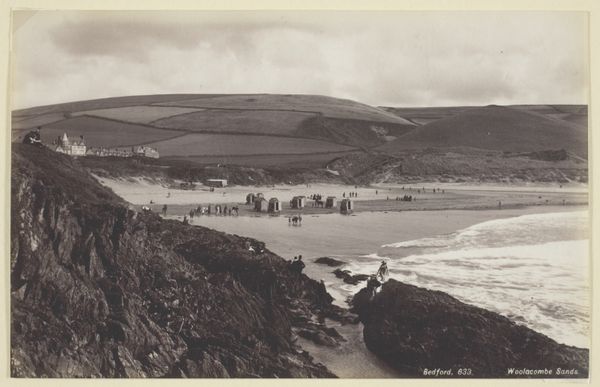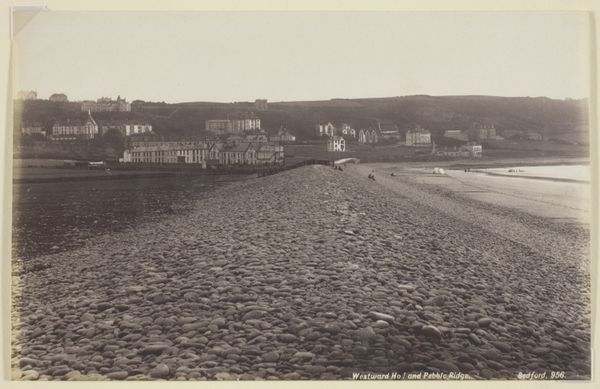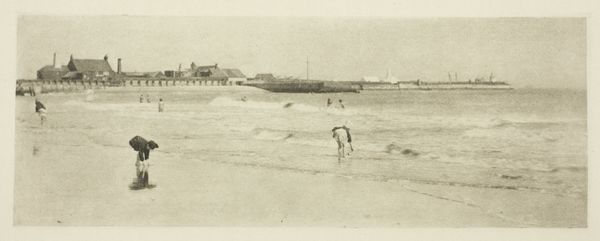
Copyright: Public Domain
Curator: Here we have Francis Bedford's "Rhyl, from the Sea," taken in the 1870s. It's a gelatin silver print. Editor: It feels… orderly, somehow. The rows of houses mirroring the waves, and then those little beach huts, all lined up like toy soldiers. There’s a definite visual rhythm at play. Curator: Bedford was a master of composition, and this is evident in the geometric structuring of the scene. Consider how the strong horizontal lines of the architecture interact with the textured diagonals of the water. There's an almost mathematical balance. Editor: While it's beautiful and balanced, what does it *mean* to capture this specific resort town in that particular moment? Rhyl became a resort town during a period of immense British expansion, powered by intense exploitation, transforming a small, sleepy region into a seaside leisure space largely due to colonial wealth. Curator: Indeed. What about Bedford's meticulous approach, evident in his control of light and shadow? Observe how the gradations in tone create a sense of depth. Pictorialism prized the aesthetic over documentary value. The artist is not merely recording a scene but is creating an emotional response, focusing on atmosphere and evocative mood through manipulated tonality and soft focus. Editor: The people look so… contained, almost regimented. And let’s consider the class dynamics. Seaside holidays were becoming popular, but they were only truly accessible to certain echelons. So whose story is he telling? Curator: Perhaps the photograph is reflective of that time. Photography's burgeoning accessibility led to widespread visual documention that shaped historical narrative and popular thought. Here, a new method of documentation has taken its time to display control and careful design. It shows new capacity while keeping tradition at its heart. Editor: That brings up more questions. The development of photography transformed social norms. We also shouldn't disregard how the artistic license shapes viewers' perception of seaside culture, effectively gatekeeping our memory of this place through idealized visuals that sanitize socioeconomic reality. Curator: I appreciate your focus on the social dimensions of the photograph, prompting reflection on its meaning beyond the aesthetics. Editor: Precisely. By situating works like this within social dialogues, we enable modern considerations that address issues like power structures, wealth disparities, and historical injustice, ultimately fostering dialogue within the arts. Curator: Thank you for emphasizing that, my friend. This analysis underscores the multi-layered meanings that artworks contain!
Comments
No comments
Be the first to comment and join the conversation on the ultimate creative platform.
